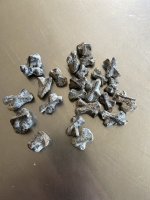Mad Machinist
Silver Member
- Thread starter
- #61
I know someone that scraps/rebuilds EV batteries. They could set you up with a complete pack in the shape you wanted, with the required electronics for probably $5K.
When I have time, I don't have the money and visa versa. With copper jumping in price, we are starting to spool back up. Hopefully soon though.



